
WEBLearn from Brendan Mitchell, a Marrawarra/Barkindji man, as he explains Aboriginal tools, stone tools and stone knapping. Stone knapping is a stone tool maki...
WhatsApp: +86 18203695377
WEBJun 21, 2023 · These implements were used for hunting, gathering, and preparing food, as well as for crafting other tools and weapons. In addition to these essentials, Aboriginal Australians also used a range of specialized tools for specific tasks, such as fishing nets, baskets, and grinding stones. From Bush to Table: How Aboriginal Australians Used .
WhatsApp: +86 18203695377
WEBInspired by Figures, grinding stone, James Ensor, circa, drawing, Belgian Art, Reimagined by Artotop. Classic art reinvented with a modern twist.
WhatsApp: +86 18203695377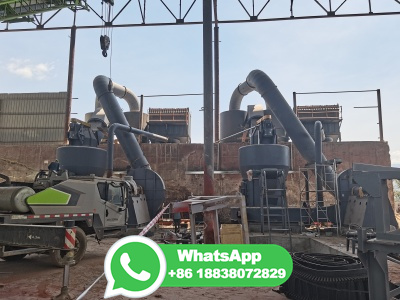
WEBJan 1, 2009 · Woolston and Colliver (1973) have suggested, based on a statement by an Aboriginal woman, that the incised grinding stones were used in a rolling crushing motion rather than grinding motion (Field ...
WhatsApp: +86 18203695377
WEBOct 1, 2015 · Developments in Aboriginal stone — or lithic — technologies over the last 40,000 years are still being debated by archaeologists and new 'methodologies' are slowly unfolding with terminologies which differ substantially from those developed in the 19 th century to classify African and European stone artifacts (dating from million years ago).
WhatsApp: +86 18203695377
WEBAboriginal people collected pigments for painting. The artists made red, purple and yellow pigments from ochre clays (which are rich in iron), and white pigment from kaolin clay. They worked in the rock shelter, grinding up the ochre (usually with a stone on a grindstone slab) and adding water.
WhatsApp: +86 18203695377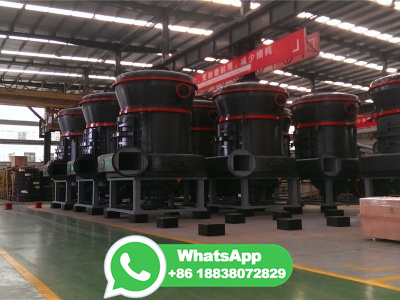
WEBMay 27, 2011 · A biography of the Australian continent. . Aboriginal Stone Tools Most stone tools observed being used were unrecognisable as tools what are the impliions?. In the book (Source 1) Hayden discusses the attitude of the Aboriginals of the Western Desert to the making and using of stone tools. This aspect of Aboriginal life in the .
WhatsApp: +86 18203695377
WEBNov 29, 2023 · Australian Aboriginal grinding stone. Credit: fir0002 / Wikimedia Commons / GFDL Making flour was hard work, requiring tools like the coolamon for winnowing and millstones for grinding. Some of these millstones are even fifty thousand years old. The flour produced from this process was mixed with water to make dough.
WhatsApp: +86 18203695377
WEBModel Author: Michael Curry. This large sandstone seedgrinding dish is from the arid zone in western New South Wales. The dish was made by hammerdressing and is heavily worn, and it is probably less than 2000 year old. This artefact was collected by the 'mother of Australian archaeology', Isobel McBryde. The dish in this model was ...
WhatsApp: +86 18203695377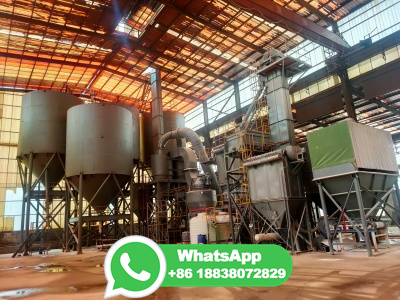
WEBEnter the email address you signed up with and we'll email you a reset link.
WhatsApp: +86 18203695377
WEBOne of the significant technological innovations affecting Aboriginal use of the environment was the grinding stone or "grindstone". Dating from around 18,000 years ago, it gave impetus to settlement in the arid center where there was heavy dependence on seed foods.
WhatsApp: +86 18203695377
WEBFeb 1, 2019 · In this study, 25 grinding and pounding stones identified during an archaeological project in arid South Australia, were examined for starch and collagen residues. The artefacts were from 3 loions in central South Australia, all loed in exposed settings. Of these localities, Site 11 in the Western Valley near Woomera is an .
WhatsApp: +86 18203695377
WEBDec 18, 2017 · The work of archaeologist Derek John Mulvaney became seminal for Mr. Frazer in identifying these objects. These tools are a testament to the craftsmanship and traditional way of life of Aboriginal people. Many of the tools were created through the process of knapping. Sharp edges were formed by striking two stones together: a .
WhatsApp: +86 18203695377
WEBSee the annotations for technological details about this stone tool. Mullers occur in a range of morphologies which varied according to the the seedgrinding technique. This style of muller has two facets on the obverse face and a flat reverse face, and the form is common in arid regions of Australia. The stone was pushed away from the user ...
WhatsApp: +86 18203695377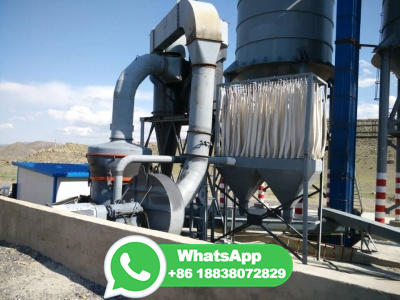
WEBMar 7, 2023 · Most Aboriginal tools are multifunctional. For example, coolamons and shields are used not only for carrying babies but also used as digging implements, water carriers and for winnowing. Other tools, such as hand axes, hammerstones and grinding stones can be multifunctional tools. WAYNE'S STORY
WhatsApp: +86 18203695377
WEBHost and manage packages Security. Find and fix vulnerabilities
WhatsApp: +86 18203695377
WEBFeb 1, 2021 · The functional study of ground stone artefacts and the analysis of charred plant remains together demonstrate that plant foods played a significant role in the diets of Aboriginal Australians through all occupation phases at the Pleistoceneaged archaeological site of Madjedbebe. Here we report studies of three sandstone grinding .
WhatsApp: +86 18203695377
WEBStarch grains, stone tools and modern hominin behaviour, in Ulm, S. Lilley, I. (ed.) An archaeological life: papers in honour of Jay Hall (Aboriginal and Torres Strait Islander Studies Unit Research Report series 7): 191 – 202. Brisbane: Aboriginal and Torres Strait Islander Studies Unit, The University of Scholar
WhatsApp: +86 18203695377
WEBThe Theodore Aboriginal artefact grinding grooves demonstrate an important aspect of past Aboriginal lifestyles and technologies. Here local elder Wally Bell explains the significance of the site and unveils a sign to edue the public. The site has exposed sandstone rock with grooves and stered stone artefacts.
WhatsApp: +86 18203695377
WEBSep 6, 2023 · Quarries a source of stone to manufacture tools. Aboriginal people quarried different types of stone, each with its own special value and use. Stone tools were made from greenstone, silcrete, quartz, quartzite, basalt and chert. Pigments were made from quarried ochre, and grinding tools were made from sandstone.
WhatsApp: +86 18203695377
WEBOchre is a soft stone composed of haematite or iron oxide, which looks very much like dry clay. Aboriginal people made 'paint' by grinding the ochre and mixing it with a variety of animal fat, water, blood and/or saliva. Ochre comes in many different colours that can be found in different places. It is estimated that Aboriginal people have ...
WhatsApp: +86 18203695377
WEBMay 26, 2018 · Aboriginal Site. Little Rocky Creek, next to Old Gympie Road near Landsborough, is a historical site used by the Gubbi Gubbi (Kabi Kabi) people for tool making. The sandstone bed made for a perfect place for grinding tools with the ready flow of water. The grooves were used to make tools such as axe heads, spearheads, and .
WhatsApp: +86 18203695377
WEBOct 2, 2019 · Experimental studies of stones used for cracking hazelnuts and hard seeds indie that usewear from stone knapping, nut cracking and kernel grinding can be distinct [1,12–15]. Our paper contributes further to this debate by distinguishing between a pitted stone implement designed specifically for largescale processing of quandong .
WhatsApp: +86 18203695377
WEBTwo basket stones, a seedgrinding dish and other stone implements lie on what is now bare ground overlooking the outlet creek and Lake Wongalara, where the reeds for basketry grew. ... Pardoe 2019 Basket Stones of the MurrayDarling Basin page 1 Basket stones We know that Aboriginal women made and carried bags and baskets of many sizes .
WhatsApp: +86 18203695377
WEBNov 12, 2023 · "We've found extensive evidence the largest forager quarries in the world were in western Queensland, where the Mithaka people extracted stone slabs to make grinding stones for processing seeds.
WhatsApp: +86 18203695377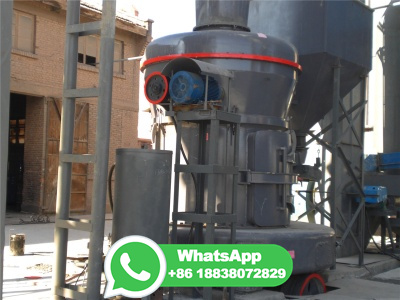
WEBCuddie Springs is about 80 km southeast of Brewarrina. It is ' a shallow depression or claypan, roughly circular in shape' and about 160m in diameter. ' It is situated in a vast plain. After heavy rain this depression is covered with water and becomes the resort of myriads of ducks and other waterfowl.
WhatsApp: +86 18203695377
WEBThe worn stone surfaces are microscopically similar to traces found on experimental and Aboriginal stone artefacts used for grinding seeds, although the development of wear patterns is variable. The most common residues were phytoliths, which indie that grinding patches were utilised for grinding grasses of the Panicoid and Chloridoid sub ...
WhatsApp: +86 18203695377
WEBFeb 9, 2024 · Quarries a source of stone to manufacture tools. Aboriginal people quarried different types of stone, each with its own special value and use. Stone tools were made from greenstone, silcrete, quartz, quartzite, basalt and chert. Pigments were made from quarried ochre, and grinding tools were made from sandstone.
WhatsApp: +86 18203695377
WEBAug 27, 2018 · Archaeologists in Australia abandoned the term "Stone Age" decades ago. So should you. Stone working is one of the most successful technologies used by humans, from million years ago to ...
WhatsApp: +86 18203695377
WEBSurface sters are the remains of past Aboriginal campsites and other activities. Aboriginal people produced and left the ster material in the course of their daily life. Activities that produced surface sters include: manufacture of stone implements for a range of everyday tasks. production and maintenance of weapons, tools and other ...
WhatsApp: +86 18203695377
WEBFind the perfect aboriginal grind stone stock photo, image, vector, illustration or 360 image. Available for both RF and RM licensing.
WhatsApp: +86 18203695377
WEBAxegrinding grooves are ovalshaped indentations in sandstone outcrops. Aboriginal people made the grooves when they shaped and sharpened stone axes by grinding them against the sandstone. Flat, low outcrops of finegrained sandstone were used to give stone axe heads a sharp cutting edge. Sometimes, Aboriginal people also carried .
WhatsApp: +86 18203695377
WEBMay 13, 2021 · Ancient Aboriginal Trade of Stone Axe and Spear Heads . ... before a final group of women sharpened the weapons on grinding stones down by the river. The Kalkadoons manufactured the stone implements not only for selfuse, but also to be traded at markets, being famous for their large size and quality (Kerwin 2010: 9798). ...
WhatsApp: +86 18203695377
WEBMar 14, 2012 · The Morah stone is no ordinary stone. The Morah stone along with other tools invented by Aboriginal people will feature in the new loans kits developed by Queensland Museum. Multiple Learning Kits will be available for loan by metropolitan and regional borrowers. The resources will be of particular interest for local area studies in .
WhatsApp: +86 18203695377